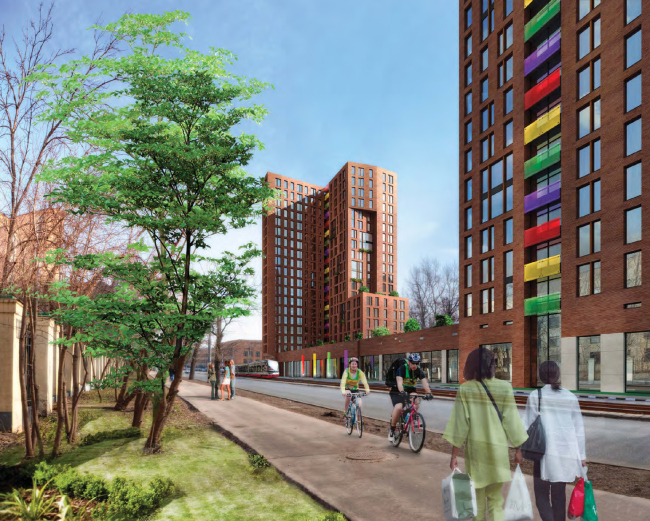
Multifunctional residential complex on the Vavilova Street. Overview. "Group ABV".
The new complex will be built in the southwest part of Moscow, in the "Akademichesky" neighborhood. The land site of a regular rectangular shape is located at the crossing of the Vavilova and the Lyapunova streets. Its surroundings predominantly consist of the 1960-1970's low-rise brick houses that serve as the background for the two 14-story residential buildings situated directly behind the designed complex.
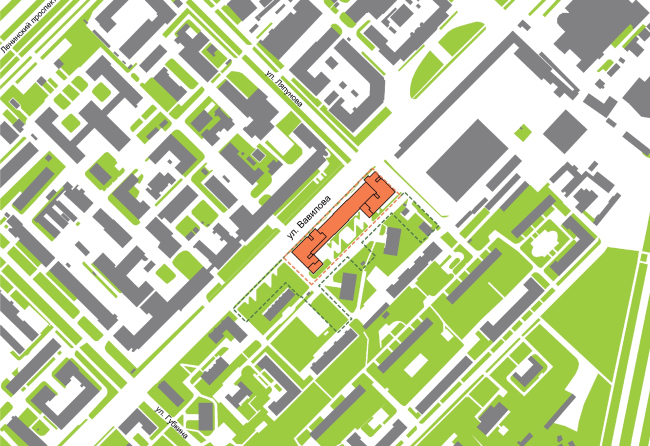
Multifunctional residential complex on the Vavilova Street. Location Plan. "Group ABV".
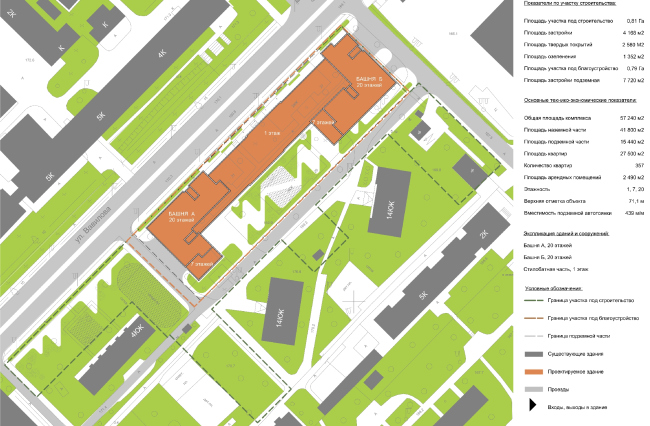
Multifunctional residential complex on the Vavilova Street. Master plan. "Group ABV".
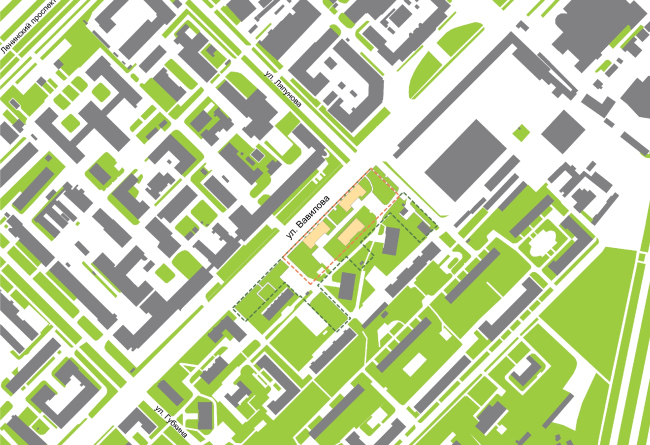
Multifunctional residential complex on the Vavilova Street. The proposal by other company.
The customer turned to "ABV" architects last year. By that time, he already had on his hands one project developed by other company - according to which it was planned to build on this site three separately standing buildings. However, this proposal did not meet the insolation requirements - therefore "ABV" architects started their work on the new concept of the complex from the search for the optimum planning and compositional solutions. The architects were faced with a tough challenge: they were to keep the height and area parameters but they were still to give up the tripartite composition. As a result, they opted for the structure of two tall L-shaped residential buildings joined by a single stylobate. This layout of volumes not only made it possible to observe all the requirements, but also provided the room for creating a spacious courtyard, protected by the walls of the complex from the roadway.
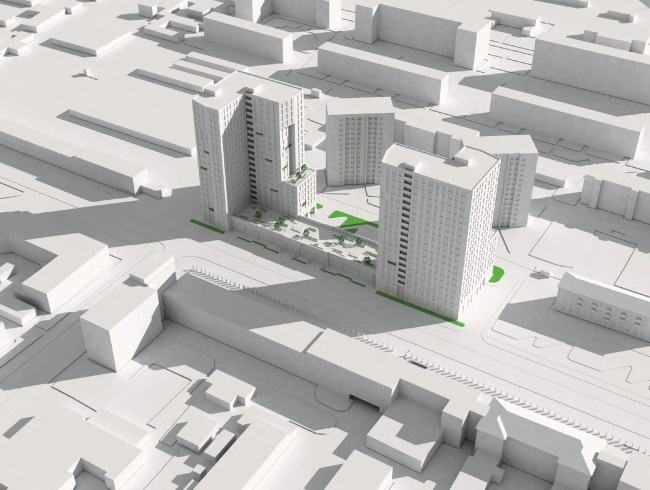
Multifunctional residential complex on the Vavilova Street. Model. "Group ABV".
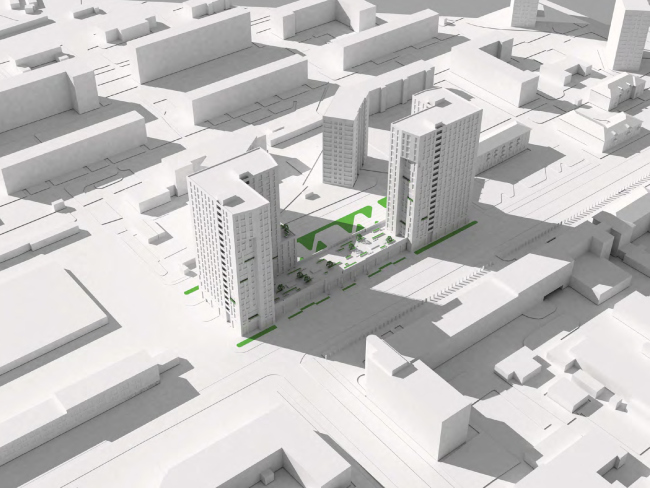
Multifunctional residential complex on the Vavilova Street. "Group ABV".
The L-shaped towers are situated on the corners of the land site that stretches along the Vavilova Street - they are mirror reflections of one another and they flank one single stylobate. Their height rises from 7 t0 20 floors; it is by "cutting off" part of the southern building the architects were able to avoid overshadowing the neighboring residential house, and the resulting height drops were used for organizing large open-air terraces. Incidentally, at the expense of the ledges, the buildings took on more dramatic outlines and more sophisticated silhouettes.
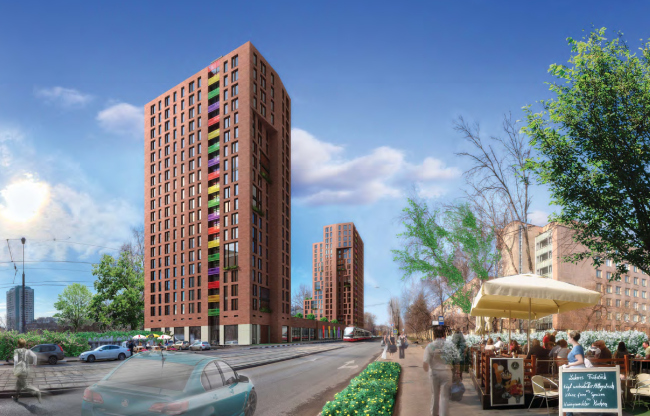
Multifunctional residential complex on the Vavilova Street. "Group ABV".
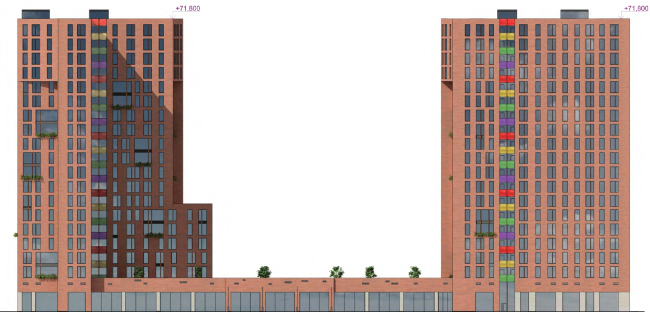
Multifunctional residential complex on the Vavilova Street. Facade. "Group ABV".
The main finishing material that the architects are planning to use is the clinker tile of the facade brick of the warm terracotta color. And if the shade of color that the architects chose is in deliberate contrast with the predominantly beige-and-yellow housing of this neighborhood, then the type of material, on the other hand, falls in with the environment. The new complex will also draw people's attention at the expense of the bright finish of its staircase blocks. Such a cheerful palette is created by using the decorative fencing elements executed from triplex that is then pasted with bonding foils of four shades of color.
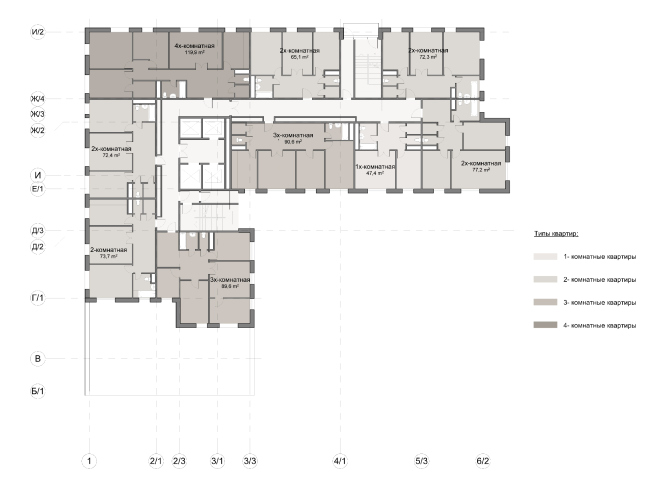
Multifunctional residential complex on the Vavilova Street. "Group ABV".
The residential buildings will include the apartments of various typologies - from one to four rooms. From the very start, the architects had the task of developing a layout as efficient as possible. Actually, it was this task that to a large extent conditioned the L-shape of the residential towers; the corner section includes the elevator and the staircase group, from which in both directions run the corridors of optimized length. Furthermore, this form of towers makes it possible to orient most of the apartments on both sides of the building.
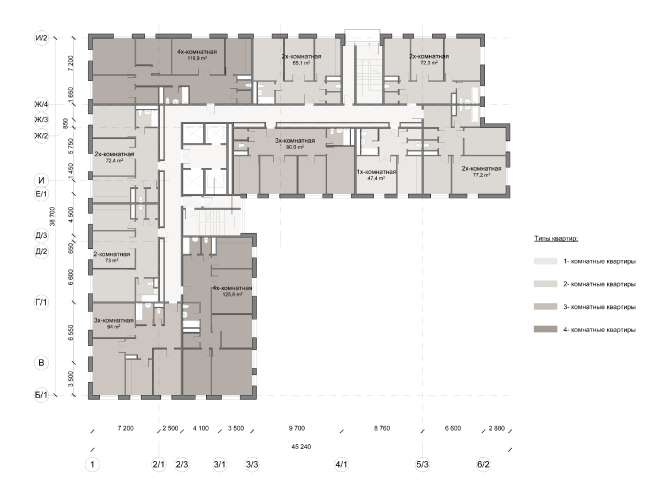
Multifunctional residential complex on the Vavilova Street. "Group ABV".
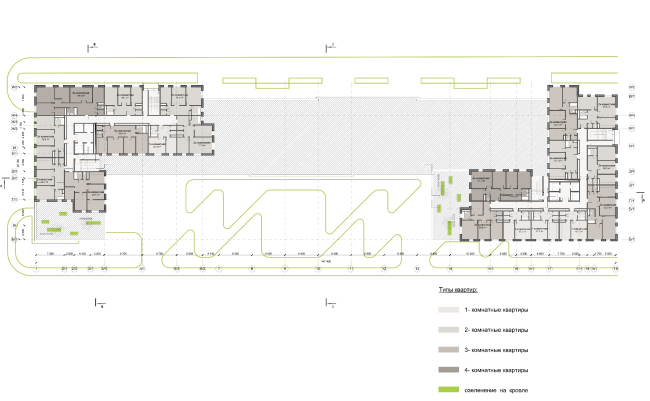
Multifunctional residential complex on the Vavilova Street. "Group ABV".
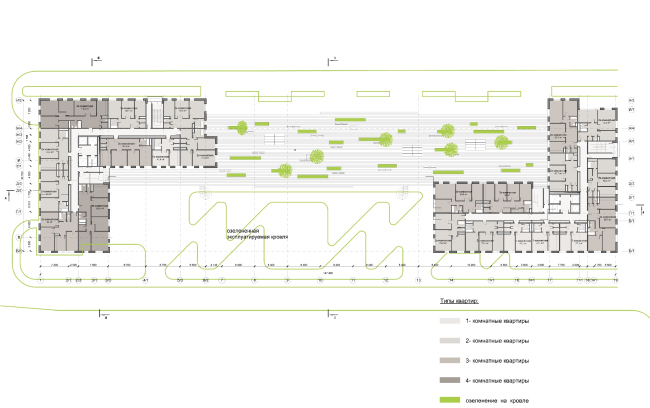
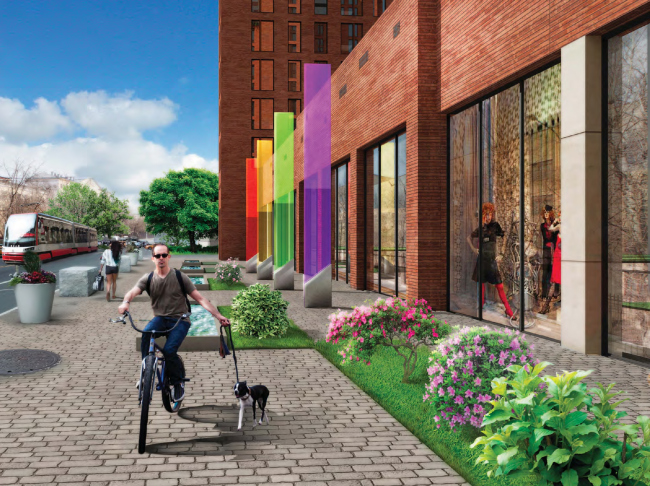
Multifunctional residential complex on the Vavilova Street. Adjacent territory. "Group ABV".
The stylobate part is used for the infrastructure objects, retail stores and boutiques with huge glass showcases. And, behold, there is life boiling before us: the landscaped walking trails, comfortable and beautiful benches, fountains, decorative design elements, and open-air summer cafes.
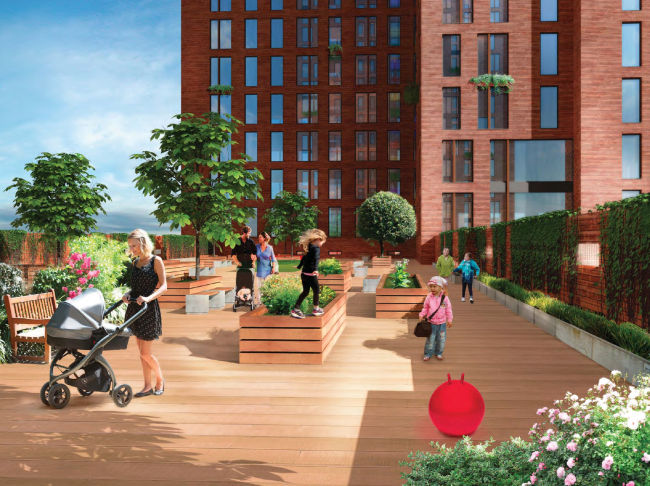
Multifunctional residential complex on the Vavilova Street. Courtyard. "Group ABV".
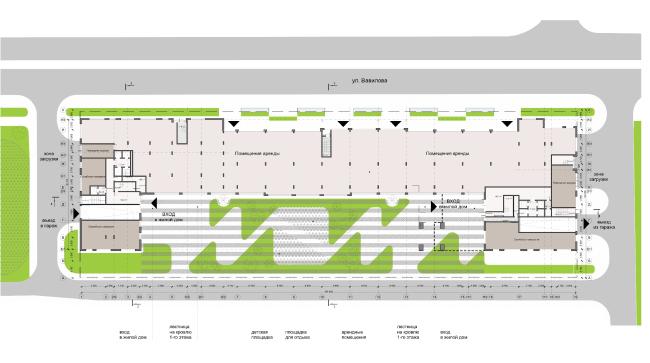
Multifunctional residential complex on the Vavilova Street. "Group ABV".
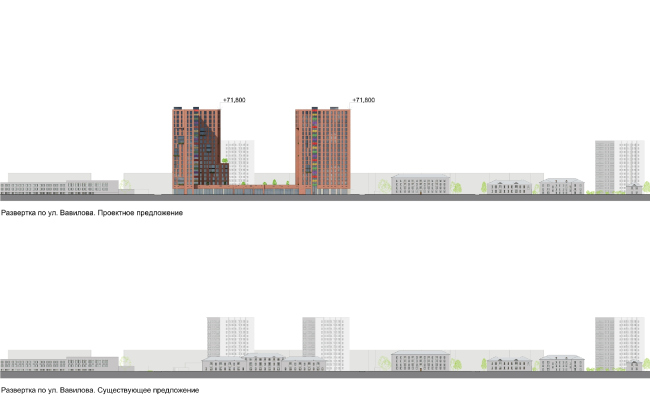
Multifunctional residential complex on the Vavilova Street. Development drawings. "Group ABV".
The roof of the first floor will also be operable - the architects propose to build a park here with large trees, flower beds, playgrounds, and recreation areas. However, while the adjacent territory will be open to the general public, the park on the roof will only be open for the residents of the complex. From the side of street the park will be fenced with a two-meter brick wall, which from the inner side will be covered with vines. Small glass block windows in this wall will give soft comfortable light. Special attention will be paid to the project of organizing the yard territory. Together with the green roofing and with terraces, it will provide the sufficiently high percentage of the public territory - quiet and green, the kind that the inhabitants of the high-rises standing in the heart of the megalopolis seem to miss so much.
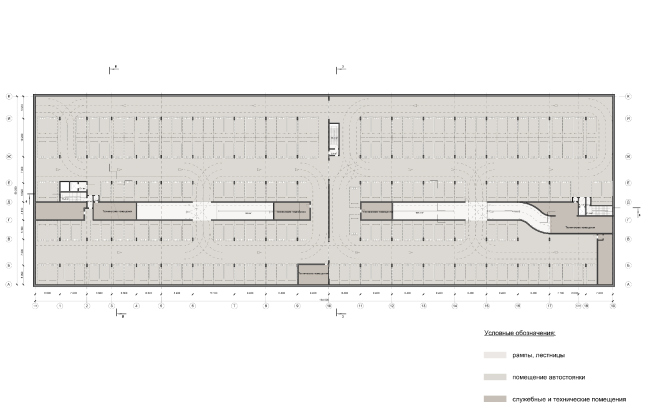
Multifunctional residential complex on the Vavilova Street. Underground parking garage. "Group ABV".



















































